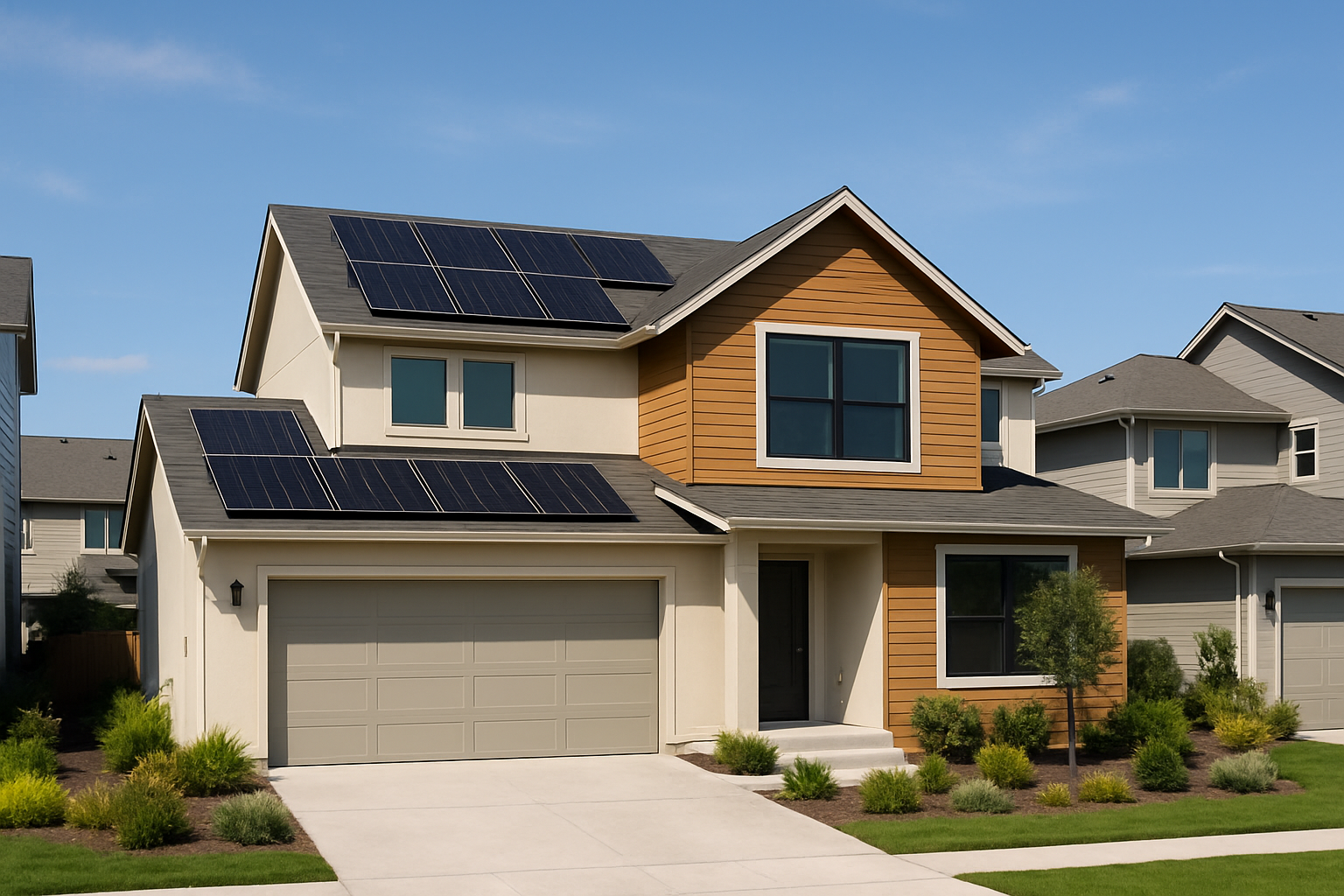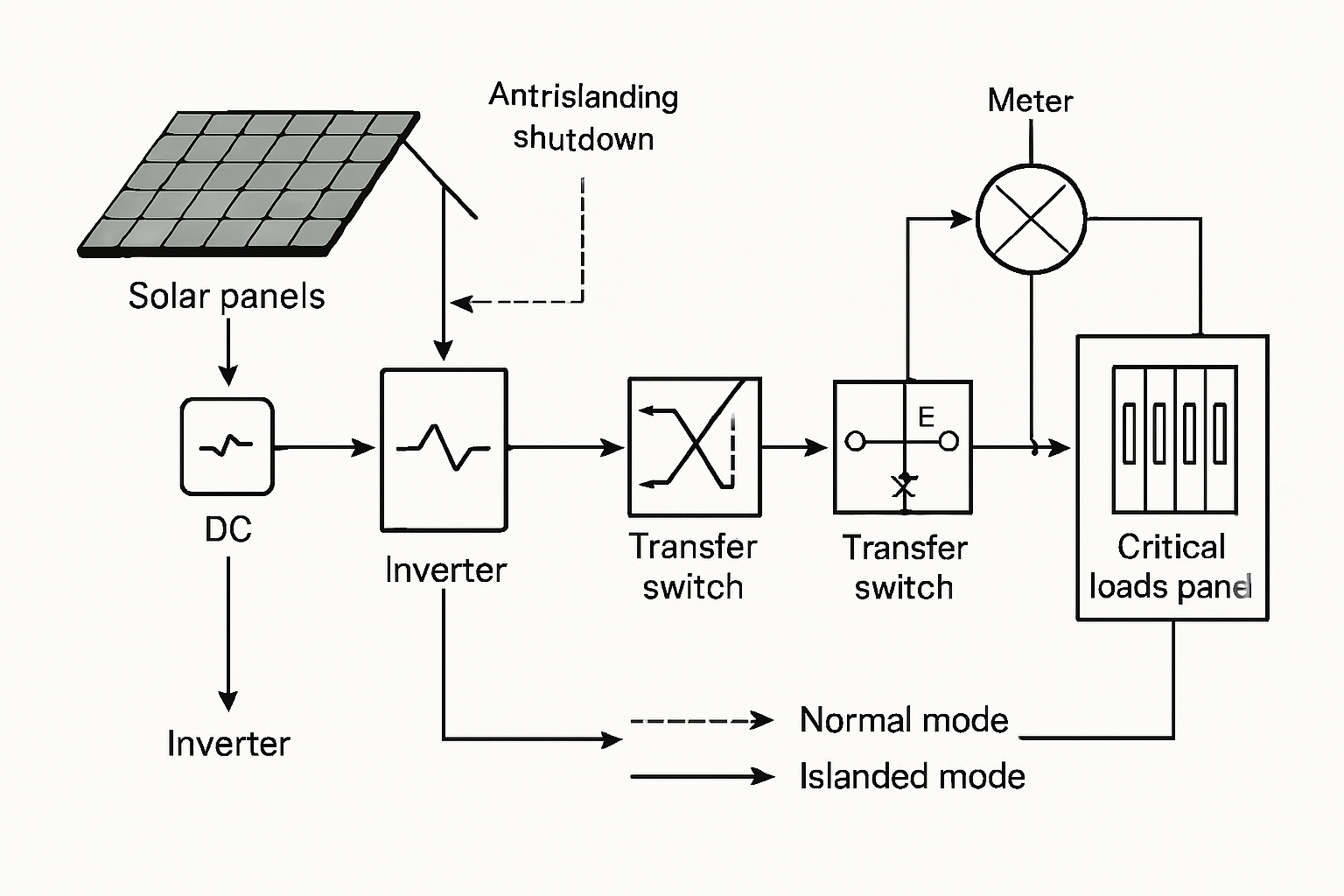Installing solar panels in neighborhoods with strict aesthetic guidelines can feel like walking through a maze blindfolded. Homeowners associations (HOAs) and local communities often prioritize visual harmony over renewable energy adoption, creating challenges for environmentally conscious residents. The good news? You can successfully navigate these restrictions with the right approach and strategic planning.

Recent data shows that over 73 million Americans live in communities governed by HOAs, making this a widespread concern for solar adoption. Understanding how to work within these frameworks while achieving your energy independence goals requires careful strategy and preparation.
Understanding Your Community's Solar Landscape
Before diving into installation plans, you need a clear picture of your community's specific requirements and restrictions. Most HOAs operate under covenants, conditions, and restrictions (CC&Rs) that outline acceptable modifications to properties.
Research Existing Solar Policies
Start by reviewing your HOA's architectural guidelines and solar-specific policies. Many communities have updated their rules in recent years to accommodate renewable energy systems. *According to the U.S. Department of Energy, state solar rights laws often supersede HOA restrictions*, providing homeowners with legal backing for reasonable solar installations.
Contact your HOA board or management company directly to discuss their current stance on solar installations. Some communities have streamlined approval processes, while others may require detailed architectural review. Document all communications and keep records of any existing solar installations in your neighborhood as precedents.
Identify Visual Compatibility Requirements
Most aesthetic rules focus on maintaining neighborhood character and property values. Common concerns include panel visibility from street view, color coordination with roofing materials, and overall system integration with home architecture.
Walk through your neighborhood and photograph existing solar installations. Note which designs received approval and identify patterns in placement, panel types, and mounting systems. This research provides valuable insights into what your community considers acceptable.
Strategic Panel Placement and Design Solutions
Smart placement can often satisfy both energy production goals and aesthetic requirements. Modern solar technology offers numerous options for discrete, attractive installations that blend seamlessly with home architecture.
Optimize Roof Positioning
Focus on roof sections with minimal street visibility while maintaining optimal sun exposure. South-facing rear slopes often provide excellent energy production with reduced visual impact from primary viewing angles. East and west-facing installations can also deliver strong performance while meeting aesthetic guidelines.
Consider split installations across multiple roof sections rather than concentrating all panels in one highly visible area. This approach can actually improve system performance by reducing shading impacts while distributing visual weight more evenly across your home's profile.
Select Appropriate Panel Technologies
Panel selection significantly impacts visual integration. All-black panels with black frames create a more uniform appearance that blends better with dark roofing materials. Some manufacturers offer panels specifically designed for aesthetic applications, featuring sleek profiles and color-matched components.
| Panel Type | Aesthetic Benefits | Efficiency Range | Cost Consideration |
|---|---|---|---|
| All-Black Monocrystalline | Uniform appearance, minimal contrast | 18-22% | Premium pricing |
| Building-Integrated PV (BIPV) | Seamless roof integration | 15-20% | Highest cost |
| Low-Profile Mounting | Reduced visual bulk | Standard efficiency | Moderate premium |
Building-integrated photovoltaic (BIPV) systems represent the ultimate in aesthetic integration, functioning as both roofing material and energy generation. While more expensive initially, these systems can satisfy even the most stringent visual requirements.
Preparation and Documentation Strategies
Thorough preparation strengthens your position when presenting your solar proposal to the HOA. Professional documentation demonstrates respect for community standards while showcasing the benefits of your planned installation.
Develop Comprehensive Installation Plans
Work with qualified solar installers to create detailed architectural drawings showing panel placement, mounting systems, and electrical components. Include multiple viewing angles and demonstrate how the installation maintains your home's aesthetic appeal.
Prepare visual simulations or renderings showing your home with the proposed solar installation. These tools help HOA boards visualize the final result and address concerns before they become objections. Many solar companies now offer 3D modeling services specifically for HOA presentations.
Gather Supporting Documentation
Compile information about your chosen equipment, including manufacturer specifications, warranty details, and safety certifications. Highlight any awards or recognition for aesthetic design that your selected panels or mounting systems have received.
Research property value impacts in similar communities. *Studies referenced by the Department of Energy consistently show that solar installations increase home values*, typically by 3-4% on average. This data can help address concerns about neighborhood property values.
Effective Communication and Negotiation Approaches
Success often depends more on how you present your case than the technical details of your installation. Building positive relationships and demonstrating community-minded thinking creates a foundation for approval.
Frame Benefits for the Community
Present your solar installation as a community asset rather than a personal project. Emphasize environmental benefits, potential property value increases, and your commitment to maintaining neighborhood character. Share information about how solar adoption can enhance the community's reputation as forward-thinking and environmentally responsible.
Offer to share performance data with interested neighbors, potentially encouraging broader solar adoption throughout the community. Some homeowners have successfully organized group purchasing programs, creating economies of scale while building community support.
Address Concerns Proactively
Anticipate common objections and prepare thoughtful responses. Address maintenance concerns by explaining modern panel durability and self-cleaning properties. Discuss system longevity and end-of-life recycling options to demonstrate long-term responsibility.
If initial proposals face resistance, remain flexible and collaborative. Offer modifications such as alternative panel colors, adjusted placement, or additional screening elements. Sometimes small compromises can transform rejection into approval.
Legal Considerations and Rights Protection
Understanding your legal rights provides important leverage when negotiating with restrictive HOAs. Solar rights laws vary by state, but many provide strong protections for reasonable solar installations.
Know Your State Solar Rights
Most states have enacted solar rights legislation that limits HOA authority to prohibit or unreasonably restrict solar installations. These laws typically protect installations that meet specific criteria for placement, size, and aesthetic integration.
*According to the U.S. Energy Information Administration, solar capacity has grown exponentially*, supported by both federal incentives and state-level protective legislation. Research your state's specific provisions and understand how they apply to your situation.
Document the Approval Process
Maintain detailed records of all interactions with your HOA, including application submissions, board meeting minutes, and correspondence. If disputes arise, this documentation becomes crucial for legal proceedings or mediation.
Consider consulting with attorneys specializing in HOA law or solar rights if you encounter unreasonable restrictions. Many offer initial consultations that can clarify your options and strengthen your negotiating position.
Implementation and Ongoing Relationship Management
Successful installation marks the beginning, not the end, of your relationship with community aesthetic standards. Proper implementation and ongoing maintenance ensure continued compliance and positive neighbor relationships.
Execute Professional Installation
Choose installers with specific experience working within HOA communities. These professionals understand aesthetic requirements and can ensure installations meet both technical and visual standards. Verify that all permits and inspections are properly completed.
Coordinate installation timing to minimize disruption to neighbors. Communicate the schedule in advance and address any concerns about noise, parking, or temporary visual impacts during construction.
Maintain Community Relations
Share your positive experience with interested neighbors and offer to discuss your system's performance. Many communities see increased solar adoption after successful initial installations demonstrate both aesthetic compatibility and energy benefits.
Keep your system well-maintained and visually appealing. Regular cleaning and prompt attention to any equipment issues maintain the positive impression your installation creates within the community.
Building a Solar-Friendly Future
Your successful navigation of neighborhood aesthetic rules contributes to broader solar adoption and community acceptance of renewable energy systems. The strategies outlined here help balance individual energy goals with collective community values.
Modern solar technology continues advancing toward better aesthetic integration, making future installations even more compatible with neighborhood standards. Energy storage systems, including advanced lithium battery solutions, further enhance the value proposition by providing backup power and grid independence benefits that appeal to entire communities.
The key lies in approaching these challenges as opportunities for collaboration rather than confrontation. When homeowners demonstrate respect for community standards while pursuing clean energy goals, they create pathways for others to follow. This collaborative approach accelerates the transition to renewable energy while preserving the neighborhood character that residents value.
Success requires patience, preparation, and persistence. Each approved installation makes the next one easier, gradually shifting community perspectives toward embracing solar energy as both environmentally responsible and aesthetically acceptable. Your efforts today help create more solar-friendly communities for future generations.





Leave a comment
All comments are moderated before being published.
This site is protected by hCaptcha and the hCaptcha Privacy Policy and Terms of Service apply.